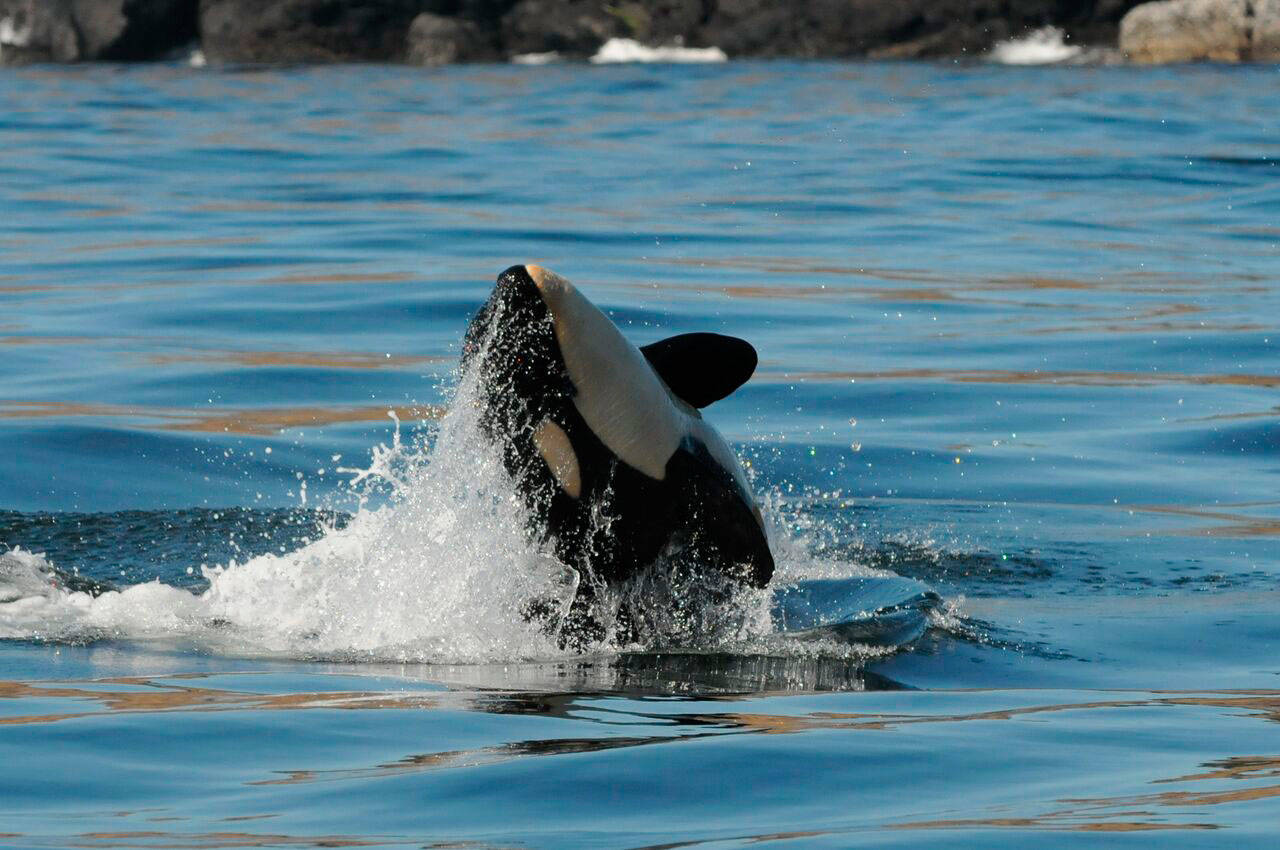A state organization dedicated to protecting the area’s endangered orcas is one step closer to fulfilling its mission.
Washington state Gov. Jay Inslee’s Southern Resident Killer Whale Task Force released a draft plan on Sept. 24. The public can comment on the report until midnight, Oct. 7 at governor.wa.gov/orcareport. Members will review comments at their Oct. 17-18 meetings and their final plan is due by Nov. 16.
The draft plan states that the organization’s “goal is to ensure the ecosystem is healthy and resilient enough to support a thriving Southern resident orca population.” Members are coordinating with an orca recovery plan created by the National Marine Fisheries Service in 2008, which strives to create an average population growth rate of 2.3 percent per year for 28 years.
The draft plan projects for an increase of 10 whales within a decade by:
• Restoring sustainable populations of the orcas’ main food source, Chinook salmon, throughout the state.
• Reducing the impacts of vessel noise and disturbance, which hinders the orcas’ ability to find food, rest and socialize.
• Reducing toxins in the ecosystem to improve the health of whales and their prey.
Last March, Inslee used an executive order to create the task force to protect both Southern resident killer whales and Chinook salmon.
County residents, including Center for Whale Research Founder Ken Balcomb, San Juan County Councilman Jamie Stephens and Washington state Sen. Kevin Ranker, D-Orcas Island, are part of the 46-member task force, which also includes members of the Canadian government and tribal leaders.
The task force’s website states that another report outlining the organization’s progress and lessons learned will be completed by Oct. 1, 2019.
With the recent death of an adolescent orca, J50, the endangered species population now totals 74 whales, the lowest number in almost 30 years.
Staff from the Center for Whale Research, located on San Juan, has counted the Southern resident killer whale population since 1976 when it was at its lowest at 71. The population reached today’s count at 74 around 1985 but peaked at 98 in 1995.
For more information on the task force, visit www.governor.wa.gov/issues/issues/energy-environment/southern-resident-killer-whale-recovery-and-task-force. Read the full draft plan below.



